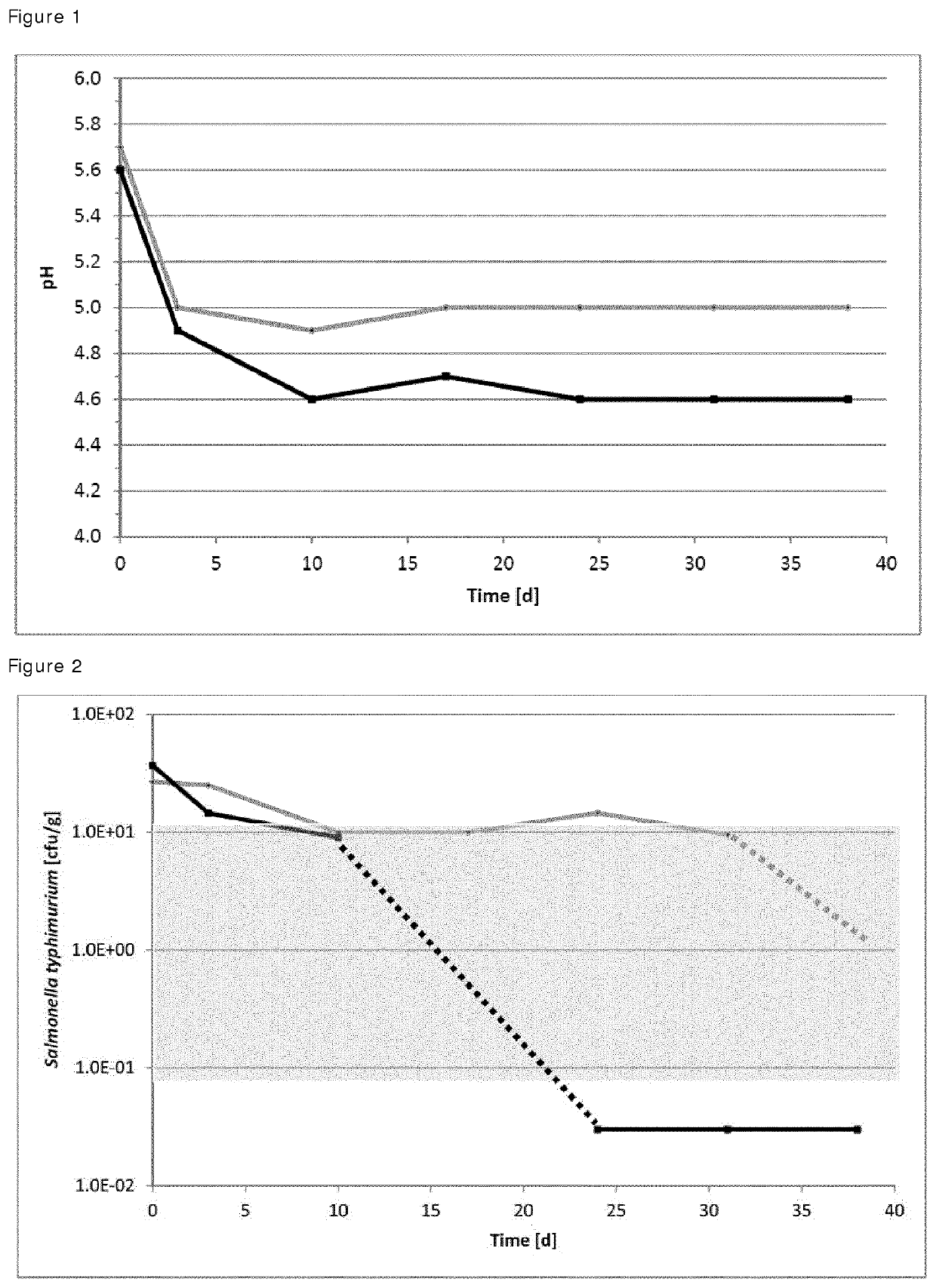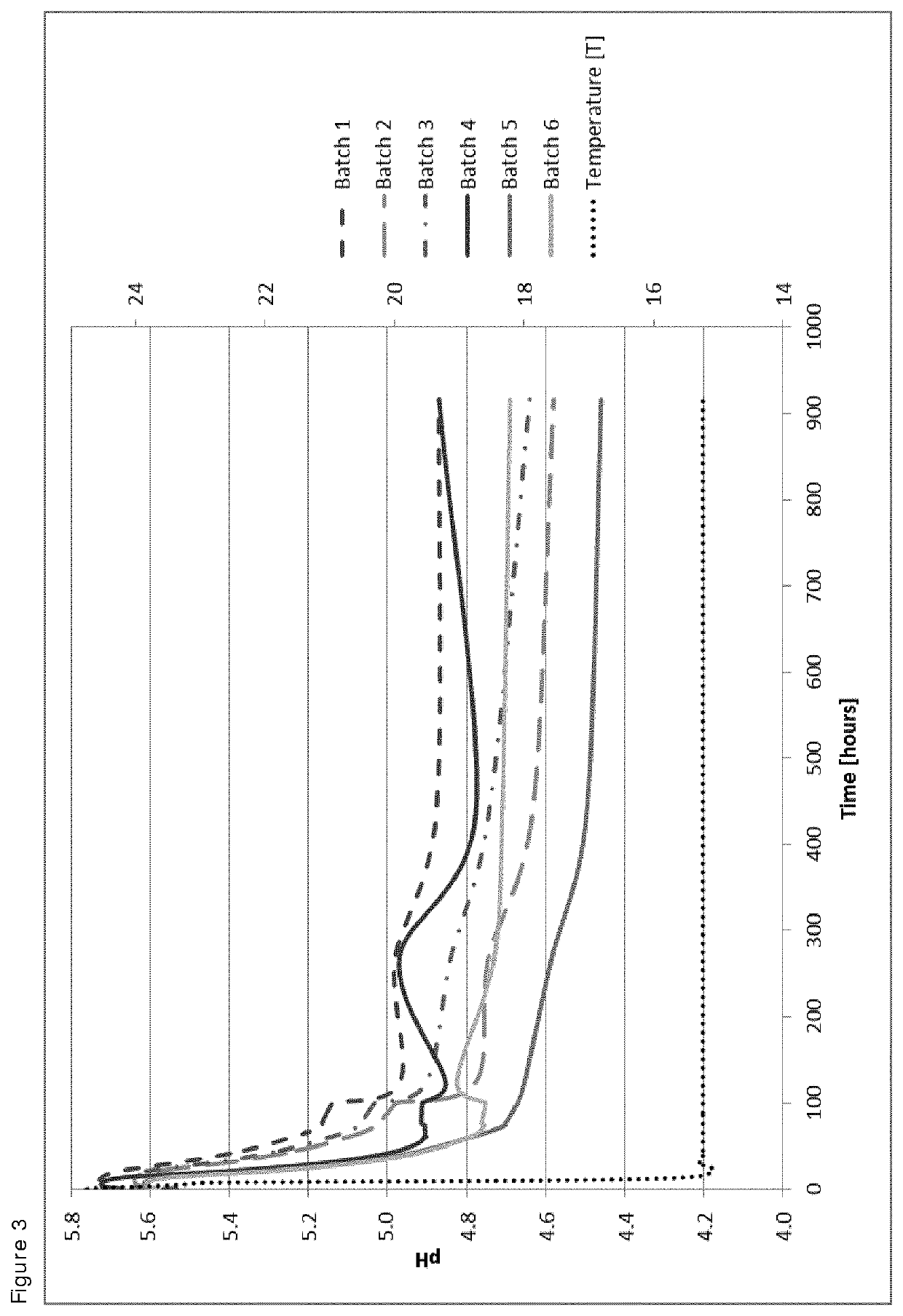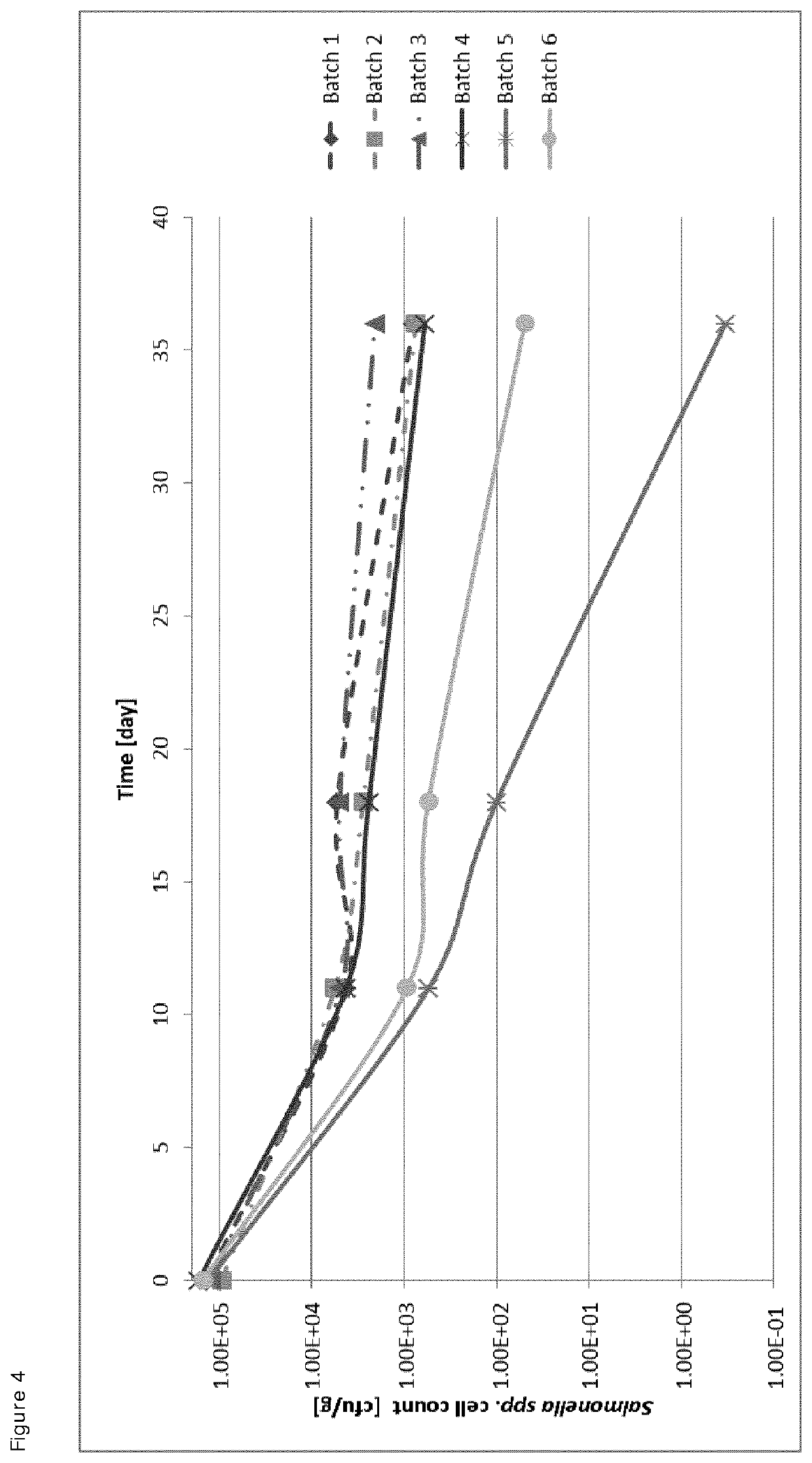Reduction of the concentration of gram-negative bacteria in a fermented food product by the combination of red wine extract and a culture comprising at least one bacteriocin-producing lactic acid bacterial strain
a technology of lactic acid bacterial strain and red wine extract, which is applied in the direction of lactobacillus, pediococcus, etc., can solve the problems of salmonella /i>, no effective anti-i>salmonella /i>solution is commercially available for raw fermented food applications, and teewurst is a product with a certain risk of microorganism contamination. , to achieve the effect o
- Summary
- Abstract
- Description
- Claims
- Application Information
AI Technical Summary
Benefits of technology
Problems solved by technology
Method used
Image
Examples
example 2
in Activity Test
[0078]The aim of this test is to quantitatively determine the activity of group IIa bacteriocins produced by a culture comprising at least one bacteriocin-producing lactic acid bacterial strain by using a rapid microtiter assay which is a modification and combination of the assays described by Budde et al., 2003.
[0079]It is generally recognized that group IIa bacteriocins inhibit Lactobacillus sakei NCFB 2714, hence this strain is often used as indicator organism in assays for detection of class IIa bacteriocins. The present microtiter assay gives a quantitative measure of the bacteriocin activity of class IIa bacteriocins expressed as Arbitrary Units (AU / ml) based on the number of two-fold dilutions of a culture supernatant causing 50% growth inhibition of the indicator organism Lactobacillus sakei NCFB 2714.
[0080]The culture fermentate of a culture comprising at least one lactic acid bacterial strain putatively producing a bacteriocin is prepared by inoculating MRS...
PUM
 Login to View More
Login to View More Abstract
Description
Claims
Application Information
 Login to View More
Login to View More - R&D
- Intellectual Property
- Life Sciences
- Materials
- Tech Scout
- Unparalleled Data Quality
- Higher Quality Content
- 60% Fewer Hallucinations
Browse by: Latest US Patents, China's latest patents, Technical Efficacy Thesaurus, Application Domain, Technology Topic, Popular Technical Reports.
© 2025 PatSnap. All rights reserved.Legal|Privacy policy|Modern Slavery Act Transparency Statement|Sitemap|About US| Contact US: help@patsnap.com



